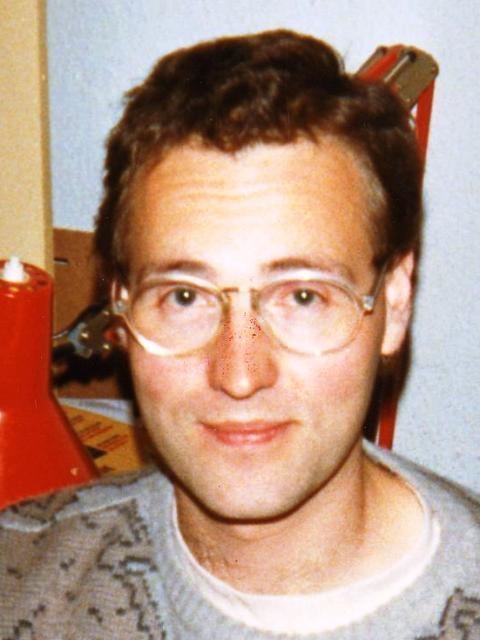Nationality German Role Mathematician | Name Andreas Floer | |
 | ||
Born August 23, 1956 ( 1956-08-23 ) Institutions Ruhr-Universitat BochumUniversity of California, Berkeley Alma mater Ruhr-Universitat Bochum Died May 15, 1991, Bochum, Germany Education Ruhr University Bochum, University of California, Berkeley | ||
Andreas Floer, On the Arnold Conjecture October 29, 1986
Andreas Floer ( [ˈfløːɐ]; 23 August 1956 – 15 May 1991) was a German mathematician who made seminal contributions to the areas of geometry, topology, and mathematical physics, in particular the invention of Floer homology.
Contents
- Andreas Floer On the Arnold Conjecture October 29 1986
- Life
- Quotes
- Selected publications
- Posthumous publications
- References

Life
He was an undergraduate student at the Ruhr-Universität Bochum and received a Diplom in mathematics in 1982. He then went to the University of California, Berkeley and undertook PhD work on monopoles on 3-manifolds, under the supervision of Clifford Taubes; but he did not complete it when interrupted by his obligatory alternative service in Germany. He received his PhD (Dr. phil.) at Bochum in 1984, under the supervision of Eduard Zehnder.
Floer’s first pivotal contribution was a solution of a special case of Arnold's conjecture on fixed points of a symplectomorphism. Because of his work on Arnold's conjecture and his development of instanton homology, he achieved wide recognition and was invited as a plenary speaker for the International Congress of Mathematicians held in Kyoto in August 1990. He received a Sloan Fellowship in 1989.
In 1988 he became an Assistant Professor at the University of California, Berkeley and was promoted to Full Professor of Mathematics in 1990. From 1990 he was Professor of Mathematics at the Ruhr-Universität Bochum, until his suicide in 1991.
Quotes
"Andreas Floer's life was tragically interrupted, but his mathematical visions and striking contributions have provided powerful methods which are being applied to problems which seemed to be intractable only a few years ago."[1]
Simon Donaldson wrote: "The concept of Floer homology is one of the most striking developments in differential geometry over the past 20 years. ... The ideas have led to great advances in the areas of low-dimensional topology and symplectic geometry and are intimately related to developments in Quantum Field Theory"[2] and "the full richness of Floer's theory is only beginning to be explored".[3]
"Since its introduction by Andreas Floer in the late nineteen eighties, Floer theory has had a tremendous influence on many branches of mathematics including geometry, topology and dynamical systems. The development of new Floer theoretic tools continues at a remarkable pace and underlies many of the recent breakthroughs in these diverse fields."[4]
